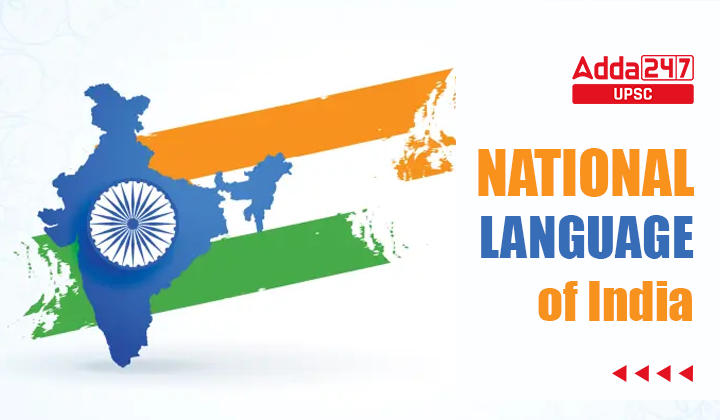Table of Contents
National Language of India: India is known for its rich cultural diversity, which is evident in the various cultures found across the nation. With 28 states and 8 Union Territories, each region showcases its unique cultural heritage and language. The Indian constitution’s eighth schedule recognizes a total of 22 scheduled languages, widely spoken in different states. The presence of numerous languages within the country has made it challenging to identify a single national language for India. Consequently, it is important to understand the official language and the concept of a national language in India.
The Official Language of India
The official language of India is Hindi. According to Article 343 of the Indian Constitution, Hindi in the Devanagari script is the official language for the central government’s communication and legislative purposes. However, it is important to note that English is also recognized as an associate official language. English continues to be used extensively in government affairs, including in the courts, parliament, and official communication with states where Hindi is not widely spoken. This bilingual approach allows for effective communication and administration in a country as linguistically diverse as India.
List of 22 Official Languages of India
In the Indian Constitution, Articles 343 to 351 of Part XVII shed light on the official languages of the country, while the eighth schedule specifically acknowledges 22 different languages. Initially, only 14 languages were mentioned, but over time, additional languages were included through various amendments. To explore the comprehensive list of all 22 languages recognized by the Indian Constitution, kindly refer to the following information.
| List of 22 Official Languages of India | ||
| Sr. No | Language | Recognition in state |
| 1 | Assamese | Assam, Arunachal Pradesh |
| 2 | Bengali | West Bengal, Tripura |
| 3 | Bodo | Assam |
| 4 | Dogri | The official language of Jammu and Kashmir |
| 5 | Gujarati | Dadra and Nagar Haveli and Daman and Diu, Gujarat |
| 6 | Hindi | Andaman and Nicobar Islands, Bihar, Dadra and Nagar Haveli and Daman and Diu, Chhattisgarh, Delhi, Gujarat, Haryana, Himachal Pradesh, Jharkhand, Madhya Pradesh, Jammu and Kashmir, Mizoram, Rajasthan, Uttar Pradesh, Uttarakhand, and West Bengal |
| 7 | Kannada | Karnataka |
| 8 | Kashmiri | Jammu and Kashmir |
| 9 | Konkani | Dadra and Nagar Haveli and Daman and Diu, Maharashtra, Goa, Karnataka, and Kerala (The Konkan Coast) |
| 10 | Maithili | Bihar, Jharkhand |
| 11 | Malayalam | Kerala, Lakshadweep, Puducherry |
| 12 | Manipuri | Manipur |
| 13 | Marathi | Maharashtra, Goa, Dadra and Nagar Haveli and Daman and Diu |
| 14 | Nepali | Sikkim and West Bengal |
| 15 | Odia | The official language of Orissa |
| 16 | Punjabi | The official language of Punjab and Chandigarh, 2nd official language of Delhi and Haryana |
| 17 | Sanskrit | Himachal Pradesh, Uttarakhand |
| 18 | Santali | Spoken by Santhal people mainly in the state of Jharkhand as well as in the states of Assam, Bihar, Chhattisgarh, Mizoram, Odisha, Tripura, West Bengal |
| 19 | Sindhi | Gujarat and Maharashtra, especially Ulhasnagar |
| 20 | Tamil | Tamil Nadu, Puducherry |
| 21 | Telugu | Andhra Pradesh, Telangana, and Puducherry |
| 22 | Urdu | Jammu and Kashmir, Telangana, Jharkhand, Delhi, Bihar, Uttar Pradesh, and West Bengal. |
What is the National Language of India?
In our Constitution, no language has been designated as the national language. While Hindi was initially declared as the national language, it poses a challenge as it is spoken by only 40% of the Indian population. Requiring everyone to learn Hindi would be impractical for the majority of the population. Instead, the Constitution of India specifies that Hindi and English are the two official languages for communication in the national government. Additionally, the Constitution includes a list of 22 official languages, including Hindi and English. These languages are represented in the Official Language Commission, and candidates appearing for national government service examinations can choose to take the exam in any of these languages.
National Vs Official Language of India
A national language is a language commonly spoken by a significant portion of a country’s population, serving political, cultural, and social purposes. On the other hand, an official language is the designated language used for government affairs, such as in national courts, parliaments, or business interactions. Typically, it is officially recognized and adopted by the government or legislative body.
According to Article 343 of the Indian Constitution, Hindi is employed by the Central Government when communicating with Hindi-speaking states. English, on the other hand, serves as an associate official language and is used for communication with the states. Therefore, as per the Constitution of India, it is important to note that Hindi and English are recognized as the official languages, while the concept of a national language is not specified.
| Follow US | |
| UPSC Govt. Jobs UPSC Current Affairs UPSC Judiciary PCS Download Adda 247 App here to get the latest updates |


 TSPSC Group 1 Question Paper 2024, Downl...
TSPSC Group 1 Question Paper 2024, Downl...
 TSPSC Group 1 Answer key 2024 Out, Downl...
TSPSC Group 1 Answer key 2024 Out, Downl...
 Cabinet Ministers of India 2024, New Cab...
Cabinet Ministers of India 2024, New Cab...







